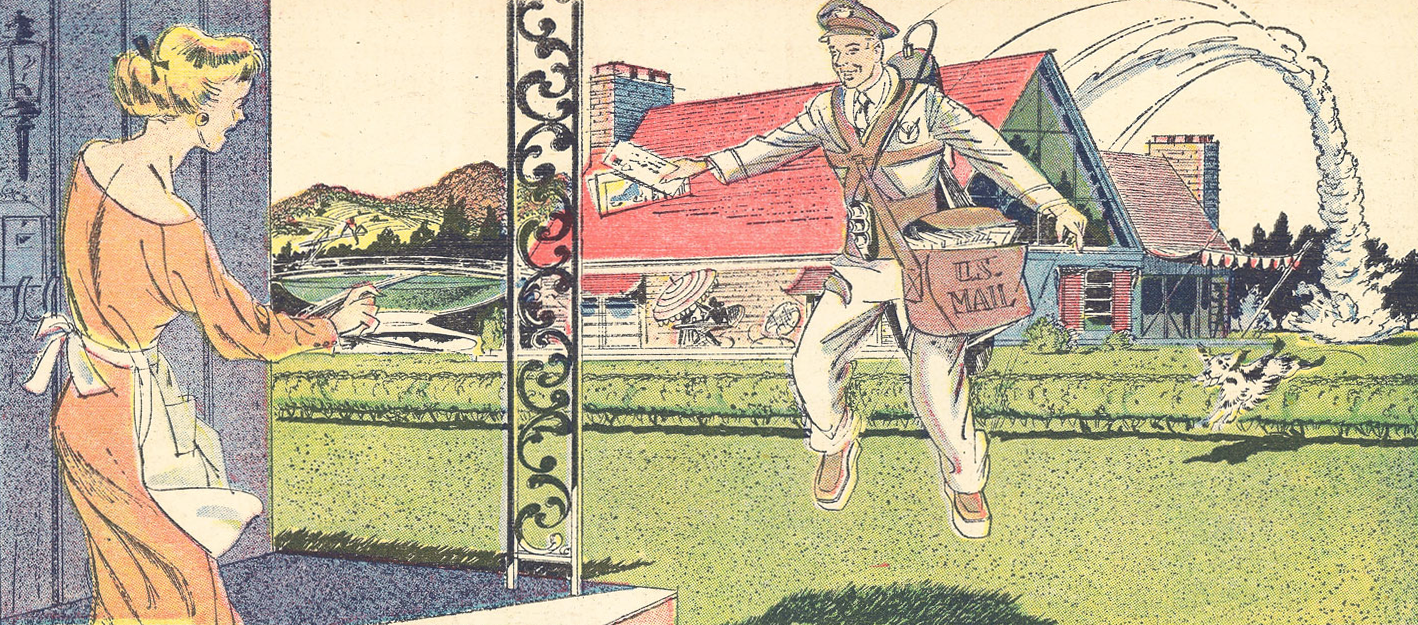
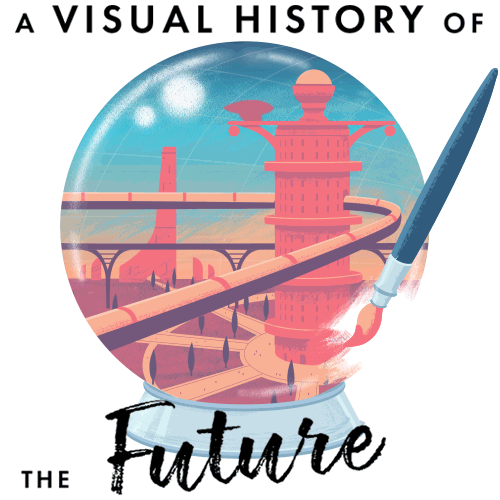
Read the next installment: “Animating the Future“
Read the previous installment: “How Ad Men Invented The Future“

In 1905, Scientific American ran an intriguing advertisement from the Electro Importing company. “Everything for the Experimenter,” it boasted. “We give you the opportunity to tick yourself up to the head of a future wireless telegraph company as did Marconi, De Forest and others.” The Temlico, a mail-order set of a small battery transmitter and receiver, was aimed at budding engineers and enthusiasts alike–and it was a bestseller.
These ads appeared during a boom in amateur interest in science and electronics, both as hobbies and as routes to careers in industries that seemed destined to define the future. Tinkerers and living-room scientists of all ages had a growing thirst for news of the latest developments in science and technology; in response, magazines like Science and Invention, Practical Electrics, and All About Television sprang up, catering to the scientifically curious and the hobbyist technologist.
These publications were meant to educate–but also to entertain. Their illustrations were drawn by artists who were also some of the 20th century’s most popular pulp and comics artists. They blurred the lines between scientific speculation and speculative fiction; plans for practical experiments would sit alongside articles that postulated that we’d someday have readable newspapers delivered to our television sets. And since these publications had a huge reach–sometimes in the millions–their ideas permeated culture, creating shared visions of the future. But how much were those visions future science, and how much were science fiction?

The founder of Electro Importing, Hugo Gernsback, played a significant role in sparking the general public’s curiosity about science and technology in the early 20th century. He helped popularize amateur “wireless,” first by importing radio parts, then moving into publishing: Modern Electrics was the first magazine about electronics and radio. By 1909, he had established the Wireless Association of America, which had a membership of over 10,000 in its first year. By 1912, he estimated that over 400,000 people were involved in amateur radio.
In 1925, Gernsback founded WRNY, a radio station in New York City; three years later, the station would be involved in some of the first television broadcasts. He was committed to broadcasting across all media: over his career he published and edited over 50 magazines, covering everything from mechanics to sex. And it was in these early magazines, dedicated to new technology, that he began to blur science fact and fiction.

Amazing Stories, which launched in April 1926, was the first dedicated science fiction magazine. (It was for this that Gernsback’s first name is lent to the Hugo Awards, the preeminent science fiction and fantasy literature awards that have been given out every year since 1953.) By 1939, there were over a dozen magazines dedicated to science fiction; fans created their own organizations and conventions, and began to write amateur stories that were published alongside professional works.
By the early 1930s, magazine stands were full of publications catering to amateur scientists, home crafters, and hobbyists. Magazines like Modern Mechanix, Science and Mechanics, and Popular Mechanics reported on progress in science and technology, interest in which was sharpened by the Second World War.
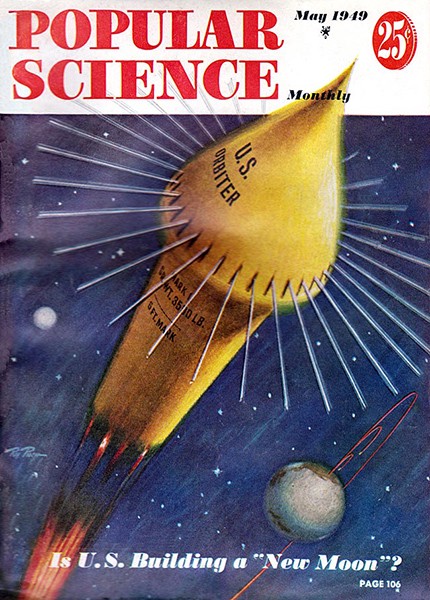
At the end of the war, Popular Science had over a million readers per issue, with a mix of news, features, how-to articles, and futurist projections. Falling somewhere between an educational publication and a monthly oracle, these periodicals would straddle the line between science and science fiction, presenting beautifully-detailed illustrations of futuristic concepts based on the latest scientific discoveries of the day.

Automation was one of the key themes these publications explored in detail–to varying levels of speculative feasibility. Visions of an automated future ranged from relieving people of tedious daily household tasks, to using “radio-tele-mechanics,” to controlling a gasoline-fueled, tear-gas-dispensing Radio Police Automaton, a distant ancestor of RoboCop.
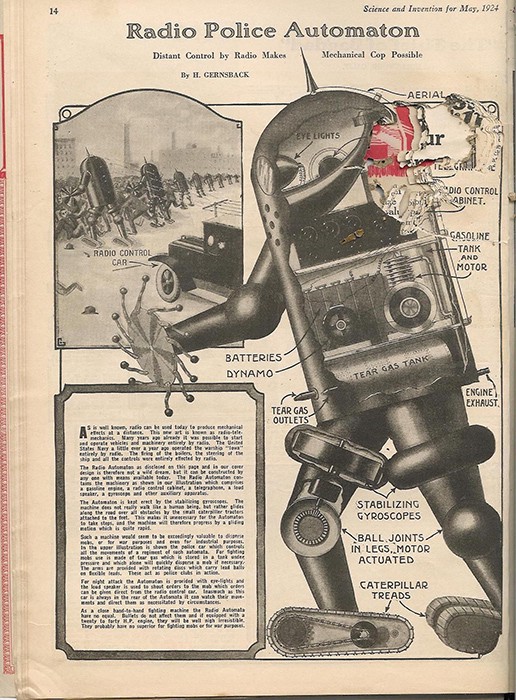
This article–attributed to Gernsback himself–states that the design was not a “wild dream,” but based on an experiment by the U.S. Navy on the warship Iowa that could “be constructed by any one with means available today.”
Artists speculated that automation could also revolutionize healthcare: a robotic avatar would allow the doctor to visit you virtually, with two-way television and robotic arms controlled by data transmitted down a phone line.

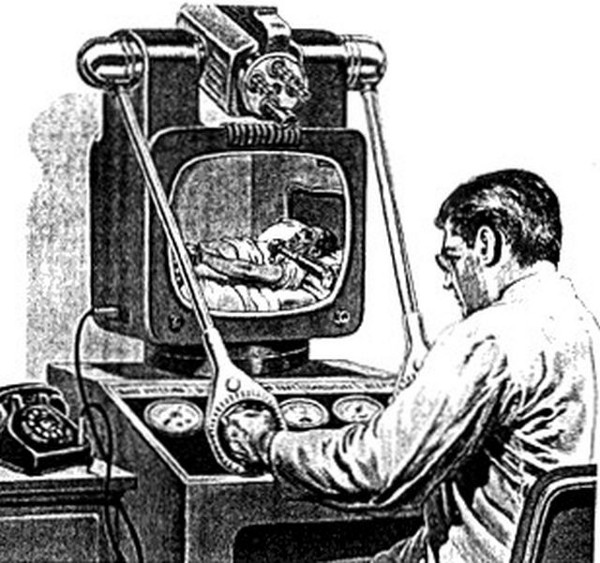
“Electrobots” would help with menial tasks around the home, which Mechanix Illustrated framed as future “slaves,” predicting that by 1965, “You’ll Own Slaves.” If the headline wasn’t already troubling in and of itself, the copywriter doubles down on the analogy: “In 1863, Abe Lincoln freed the slaves. But by 1965, slavery will be back! We’ll all have personal slaves again, only this time we won’t fight a Civil War over them. Slavery will be here to stay.” The follow-up reassurance–”Don’t be alarmed. We mean robot ‘slaves.'”–is”¦ less than reassuring.
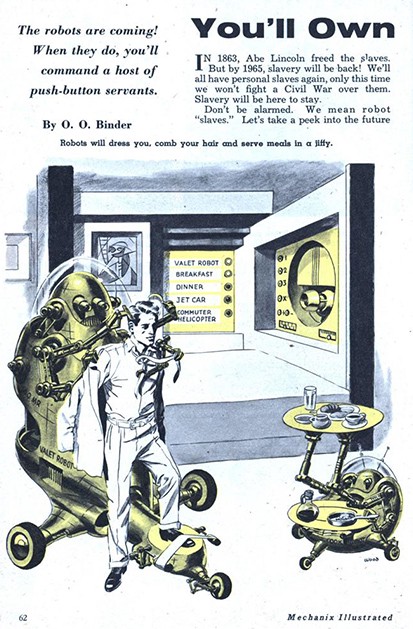
The artist here is Wally Wood, more famous for his comics work: he did Daredevil for Marvel, was a founding artist of Mad magazine, and worked on EC science fiction comics Weird Science and Weird Fantasy.
Many artists presented automation on a bigger scale than household robots. Building and infrastructure were common themes, often centering around transport and the desire to shorten travel time. Tunnels, tubes, or bridges to connect distant locations were a popular thread; a floating underwater “concrete tube” linking Gibraltar and Africa was a particularly ambitious example. This was actually proposed as a solution when the undersea rock was found to be too hard for drilling a tunnel.
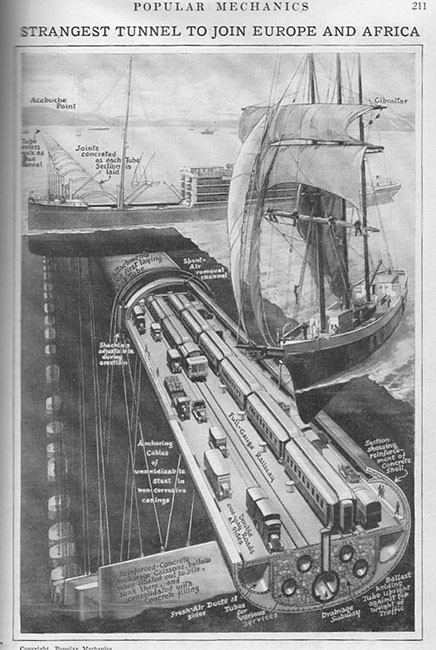
On land, artists envisioned “elevated trains whizzing at tremendous speed from city to city, powered solely through electromagnetic lines of force”¦” This concept was seen as part of a “war against friction” waged by German engineers that bears a striking similarity to Elon Musk’s modern Hyperloop ideas.
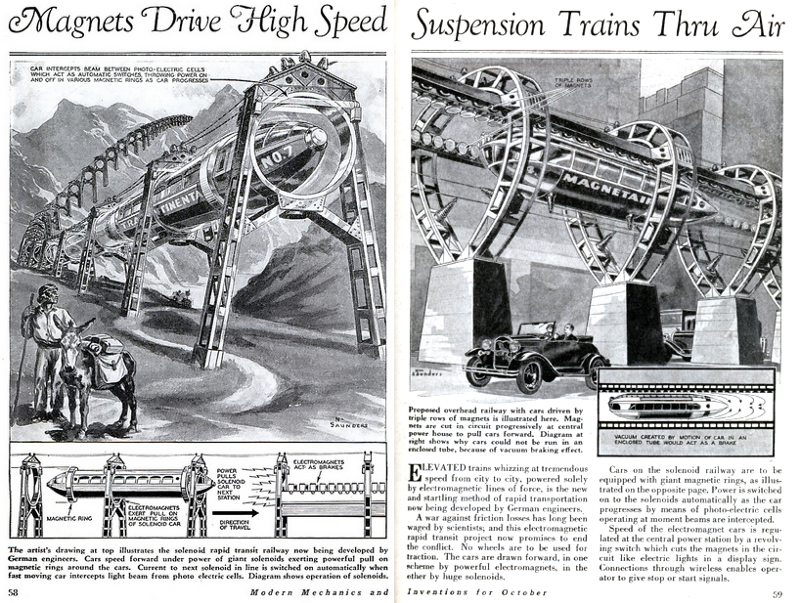
Norman Saunders worked as a prolific illustrator of pulp magazines and comics, and with fellow artist Wally Wood, he would go on to draw graphic scenes of dog destruction with the 1962 “Mars Attacks” series of trading cards.

Despite the devastation of the First World War, the technological boom that accompanied it spurred factual magazines to theorize on more advanced methods of future warfare. These images often looked more akin to those in the science-fiction publications they shared shelf space with.

Texas inventor A. J. Richardson proposed the “Tumbleweed Tank” to break the deadlock of trench warfare. Despite its possibilities, the American Army saw a problem: if soldiers were sealed inside to prevent poison gas attacks, how could they see what was going on outside?


We don’t know whether this design inspired the prototype “Kugelpanzer” built by the Germans during World War Two–but they are quite similar.
“Secret weapons” have a firm foundation in pulp storytelling. Frank Tinsley, an artist who spent the First World War as a draftsman in the War Department, later moved between science publications, pulp, comics, and science fiction magazines. This Mechanix Illustrated spread touches on rumors of an “arctic death mist”–a gas developed by Nazi scientists that could wipe out an entire country by freezing all it touches, then dispersing to allow “the enemy to capture a country and its resources intact.”

The death ray is a secret-weapon staple of science fiction and pulp storytelling. Antonio Longoria and Nikola Tesla claimed to have invented versions of particle or electromagnetic weapons during their careers; Longoria claimed his invention could take down a pigeon from a distance of four miles. Here, a spread about a “Cosmic Ray-Gun” suggests that while the atomic bomb is seen as the “ultimate weapon,” “a conviction has been growing that Einstein’s original equation E=MC² has not had its final say.”
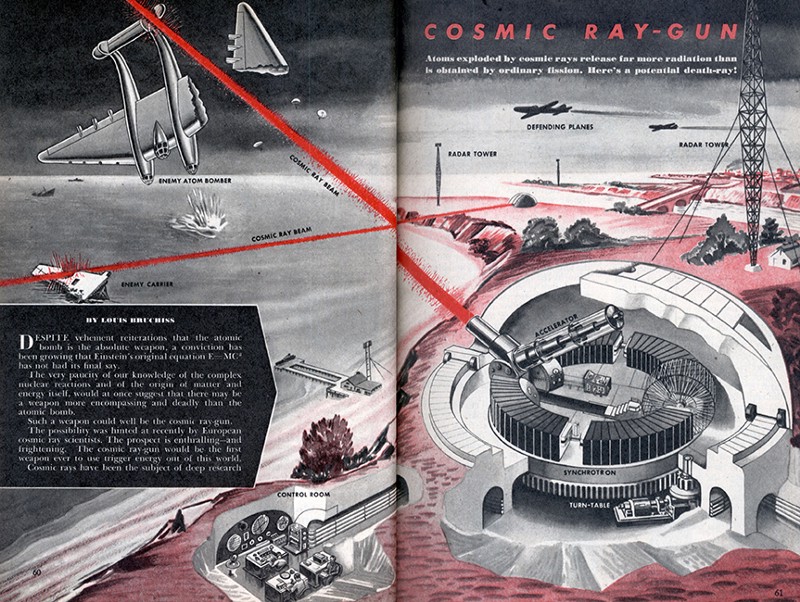
Missile shields were explored in magazines decades before Ronald Reagan’s “Star Wars” initiative: “Flying Missiles CAN be Stopped!” appeared shortly after V-2 rockets designed by Nazi engineer Wernher von Braun began raining down on Europe in September, 1944.
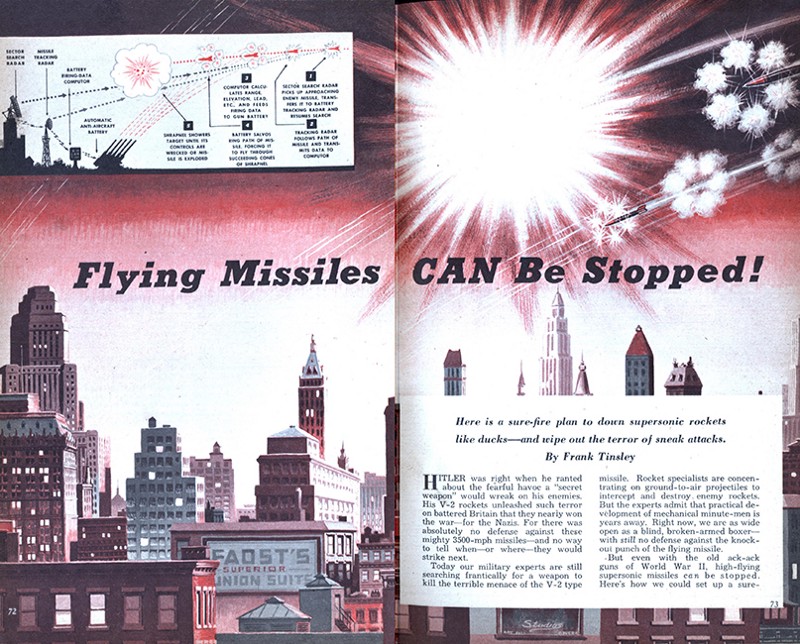
By the 1960s, the Cold War was well underway. Collective fear centered on nuclear-armed intercontinental ballistic missiles–and how they could be stopped. In Fortune, “How to Hit a Bullet with a Bullet in a Blizzard” breaks down the task in greater detail than its pulpish counterparts, looking at the decision-making process that the “multi-function array radar” and connected computer make during an attack.

Artist Max Gschwind worked in the Office of Strategic Services–the predecessor to the CIA–during World War Two, producing information in graphical form for the troops. He later became one of Fortune’s key visual personnel, illustrating ideas about science and technology using detailed, sophisticated imagery to explain complex ideas to readers.

While magazines had big circulation numbers, newspapers provided daily penetration into American homes. Comic strips had an even broader reach than a local newspaper, as they were syndicated across the United States. As science fiction magazines grew in popularity, comic strips began to tap this enthusiasm, with swashbuckling characters like Buck Rogers and Flash Gordon.
But these sat side-by-side with syndicated factual comic strips, and though they mostly dealt with historical topics, some responded to current events. After the launch of Sputnik in 1957, Americans worried about falling behind in the Space Race wanted to foster more interest in science education. This inspired not one, but two future-looking strips meant to educate while they entertained: “Our New Age” and “Closer Than We Think.”
In 1958, geophysicist and oceanographer Athelstan Spilhaus launched “Our New Age,” a strip that would explore ideas about the future through syndication in more than 100 newspapers over the next two decades. Drawn by Earl Cros, E.C. Felton, and, from 1961, Gene Fawcette, it tackled a different scientific principle each week, extrapolating where current developments might lead, often with an optimistic outlook.
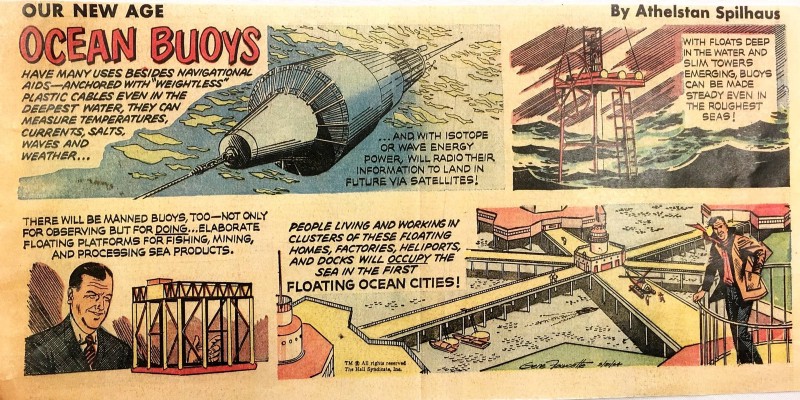
In Spilhaus’s imagination, ocean buoys would eventually become homes and workplaces. He wrote: “people living and working in clusters of these floating homes, factories, heliports and docks will occupy the sea in the first floating ocean cities.” And while floating cities may not have come to pass–yet–Spilhaus’s predictions of a satellite revolution, which would change the way we learn, share information, and work, feels much more prophetic.


Arthur Radebaugh had spent the Second World War in the U.S. Army’s Pentagon Ordnance Research and Development Department in the Design and Visualization Branch, where he designed, amongst other things, armored cars and bazookas. As a commercial illustrator, he developed mastery of the airbrush; on iconic campaigns for Bohn and National Oil Seals, his imagination shaped ideas “halfway between science fiction and designs for modern living.”
In early 1958, Radebaugh launched “Closer Than We Think,” a strip that mixed science and futurism; it illustrated a staggering array of possibilities in its five-year run. At the height of its syndication, “Closer Than We Think” reached 19 million readers across North America, and it was often drawn in the back of Radebaugh’s van as he travelled the country looking for inspiration.
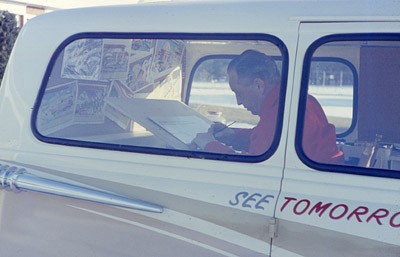
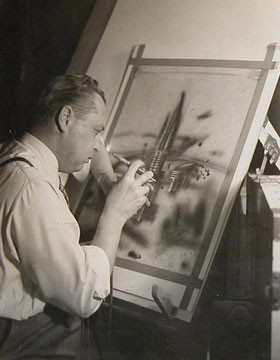
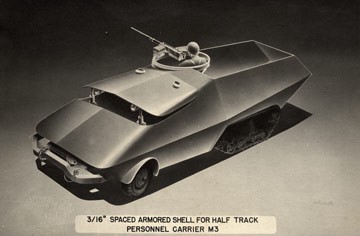
Radebaugh applied his signature design curves to a “swarm of robot implements” steered by “radio-controlled push buttons” in hovering control modules. He was also a pioneer of recycling (his own work): he first used the following image as an advertisement for National Motor Bearing in 1954.

Extrapolating on an idea proposed by U.S. Senator Warren Magnuson, Radebaugh took the concept of connecting Alaska to Siberia (and possibly New York to Paris) and turned it into an underwater glass tunnel, with drivers gazing up at shark-infested waters. “Next week: Plastic School Houses!”
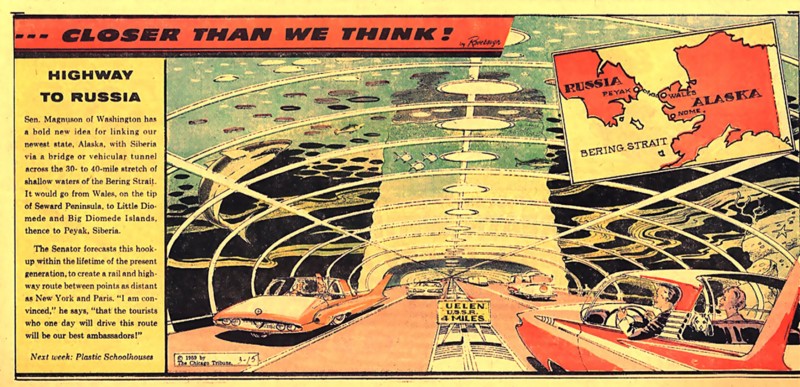
“Arctic War Train” looks to potential Cold War conflicts in the region, with war machines powered by an atomic reactor.
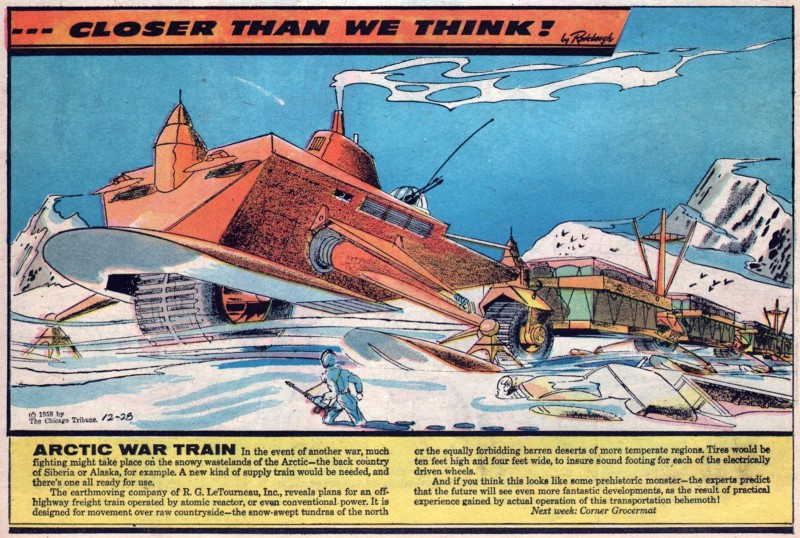
Communications technology, Radebaugh speculated, could profoundly affect the job market. He was inspired by Felix Cuervo from the Civil Aeronautics Administration, who used a two-way closed-circuit television to interview candidates. “Dress, bearing, manner and ability can be gauged over television about as accurately as in personal interviews.”


It’s hard to quantify exactly what impact these futuristic images had on the scientific and technological advances of the 20th century. But the circulation and longevity of magazines like Popular Mechanics and Popular Science–which have now run for over 100 years–means that populist ideas about the future have endured.
That populism was at odds with scientific credibility; Athelstan Spilhaus said that his “Our New Age,” was looked down upon by fellow academics. When they raised this with him, he had a simple response: “Which of you has a class of five million every Sunday morning?” Among that five million was President John F. Kennedy who appointed Spilhaus to direct the United States exhibit at the 1962 Seattle World’s Fair. On meeting Spilhaus, Kennedy said, “The only science I ever learned was from your comic strip in the Boston Globe.”
The final installment of “Closer Than We Think” was published in 1963, and Radebaugh went into early retirement due to long-term ill health. He had been using his airbrush to create his vision of the future since the late 1930s. Interviewed in 1971, he described watching a feature on the Today show–a prototype parking lot using elevators and conveyor belts was being tested at Washington Dulles International Airport. It was incredibly similar to something he had designed in 1948. “Most of my stuff was laughed at,” Radeburgh told the interviewer. “But the guys now making this and other things come true are the guys who were sitting on the floor back in those days, reading my comics.”

Read the next installment: “Animating the Future“
Read the previous installment: “How Ad Men Invented The Future“

How We Get To Next was a magazine that explored the future of science, technology, and culture from 2014 to 2019. A Visual History of the Future is a five-part series on the way artists’ visions of the future shaped the world we now know.
